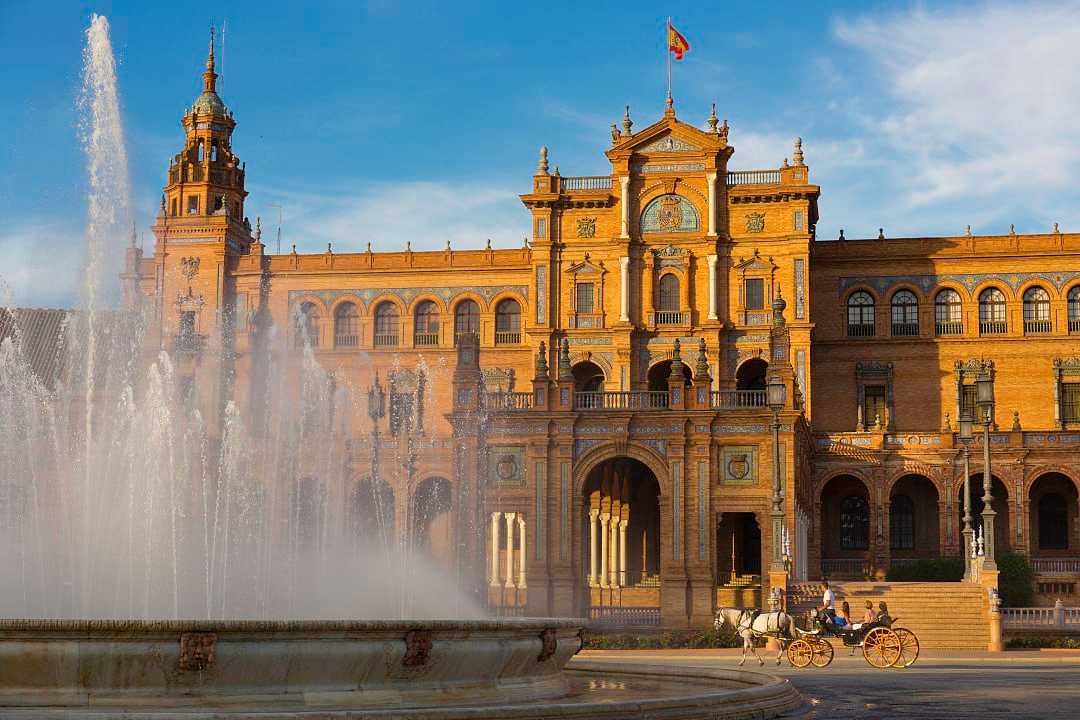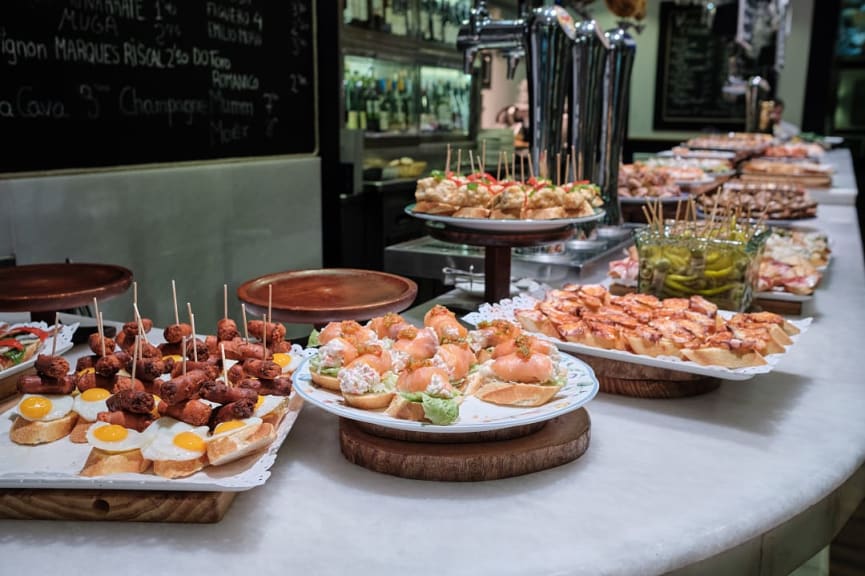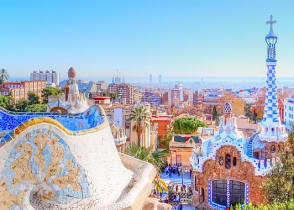Spain vs France: Where Should I Travel?

Plaza de España in Seville, Spain
Choosing between Spain and France is like stepping into two vastly different yet equally mesmerizing worlds. Both countries promise enchanting landscapes, world-renowned cuisine, and cultural treasures, but their allure lies in their distinct personalities.
When selecting between the destinations, weigh the factors that will shape your journey. France beckons you with its sophisticated charm and world-renowned wine regions, while Spain entices travelers with its passionate culture and diverse regional identities. Each country presents its own approach to luxury travel, from historic palace hotels and Michelin-starred restaurants to exclusive coastal resorts and cultural experiences that can't be found anywhere else.
This guide will take you on an immersive journey through the heart and soul of Spain and France to help you discover which destination resonates with your travel dreams.
Where is Spain?

Frigiliana, along the Costa del Sol in Spain
Spain is nestled on the Iberian Peninsula in southwestern Europe. It is a vibrant land where diverse cultures and stunning landscapes converge. Bordered by Portugal, France, Andorra, and Gibraltar, its southern tip nearly brushes against Morocco across the shimmering Strait of Gibraltar. The country is embraced by the Mediterranean Sea and the Atlantic Ocean, offering spectacular coastal beauty.
The Spanish mainland showcases a remarkable array of landscapes, from the sun-drenched beaches of the Costa del Sol and Costa Brava to the towering peaks of the Pyrenees Mountains along the northern border. Wander through the lush greenery of Galicia in the northwest, where rolling hills meet the rugged coastline, or explore the arid expanses of La Mancha in central Spain, famous for its windmills and vast plains. This geographical diversity not only shapes Spain's stunning scenery, but also enriches its cultural identity, creating distinct regional flavors that invite exploration and discovery.
Where is France?

Château de Chambord in Loire Valley, France
France serves as a stunning geographical bridge, linking the lush landscapes of northern Europe with the sun-kissed charm of the Mediterranean basin. Bordered by Belgium, Luxembourg, Germany, Switzerland, Italy, Monaco, Andorra, and Spain, the country boasts a remarkable diversity of scenery. From the rugged Atlantic coastline of Brittany, where wild waves crash against dramatic cliffs, to the glamorous beaches of the French Riviera, where golden sands meet azure waters, each region offers its own allure. The majestic French Alps rise in the east, their snow-capped peaks inviting adventure seekers to explore breathtaking landscapes, while the rolling vineyards of Bordeaux promise indulgence and relaxation amid picturesque countryside.
Major rivers have shaped the history and culture of this enchanting land. The Seine flows gracefully through Paris, the Loire winds through fairy-tale châteaux and charming villages, and the Rhône meanders southward past vineyards and lavender fields. In southwestern France, the Garonne flows through bustling cities like Toulouse, where cafés and markets buzz with life.
What are the Similarities Between Spain and France?

Burgundy, France
Spain and France share a deep-rooted passion for gastronomy. Their respective cuisines are recognized as UNESCO Intangible Cultural Heritage. From Spain's tapas culture and regional specialties like paella to France's haute cuisine and wine traditions, both nations have elevated food and dining to an art form that shapes daily life and social interactions.
Spain and France boast remarkably similar geographic features, including extensive Mediterranean coastlines that have fostered vibrant beach cultures and tourism industries. Both are crowned by the Pyrenees Mountains along their shared border and each possesses diverse landscapes ranging from alpine regions to fertile valleys and sun-drenched coastal plains.
Spain and France share a rich architectural heritage that spans millennia, from Roman ruins and medieval castles to Gothic cathedrals and modernist masterpieces. Their urban cultures celebrate the art of living well, with cities designed around public squares and boulevards where café culture, shopping, and social life flourish.
What are the Differences Between Spain and France?

The Alhambra in Granada, Spain
France and Spain diverge significantly in their daily rhythms and lifestyle patterns. France generally follows a more conventional European schedule, while Spain embraces a notably later daily timeline. Lunch typically occurs around 2pm and dinner rarely starts before 9pm. The Spanish siesta culture, though diminishing in urban areas, has historically shaped business hours and social patterns in ways France never adopted, leading to distinctly different approaches to work-life balance and social schedules.
The rich artistic and architectural heritage of both nations follows distinctly different paths. French architecture and art traditionally emphasize classical symmetry, formal gardens, and elegant restraint, as exemplified by the Palace of Versailles and Parisian Haussmann architecture. Spanish design tends toward more dramatic and eclectic styles, blending Moorish influences with flamboyant Gothic and modernist elements, as seen in Barcelona's Sagrada Familia and Granada's Alhambra.
Does Spain or France Have Better Beaches?

Playa de Burriana in Nerja, Spain
Whether Spain or France has better beaches largely depends on what type of coastal experience you seek. Spain's Mediterranean coast, particularly the Costa del Sol and Costa Brava, offers consistently warmer waters and more reliable sunny weather throughout a longer season. These Spanish beaches tend to be more developed for tourism, with extensive infrastructure of beachfront hotels, restaurants, and activities. They also feature longer stretches of sandy coastline. Many Spanish coastal towns have built their entire identity around beach culture, creating vibrant seaside communities.
France's beach offerings are more diverse, ranging from the glamorous pebbled shores of the French Riviera to the wild, windswept Atlantic beaches of Biarritz and the unique tidal landscapes of Normandy and Brittany. The French Riviera beaches are perhaps not as consistently sandy as their Spanish counterparts, but compensate with their legendary sophistication and crystal-clear waters. The Atlantic coast of France offers excellent surfing conditions and vast stretches of natural, less-developed coastline that will appeal to you if you are seeking a more authentic beach experience.
For seaside-focused vacations, Spain is fabulous due to its warmer climate, longer season, and extensive infrastructure dedicated to beach tourism. French beaches often offer a more diverse experience, seamlessly integrating with historical towns and cultural attractions. The French coast tends to maintain a better balance between development and natural preservation, while Spanish beaches can become quite crowded during peak season. Ultimately, the "better" beach destination depends on whether you prioritize consistent weather and extensive beach facilities or variety and cultural integration.
What Are the Top Activities in Spain?

Sagrada Família in Barcelona, Spain
The echoes of ancient traditions blend seamlessly with the pulse of modern life in Spain. Wander through the sunlit alleys of Seville, where the air vibrates with the rhythmic stomping of flamenco dancers. Find a cozy plaza in Barcelona that’s alive with laughter as you savor delectable tapas watched over by Gaudí’s architectural masterpieces.
Glide through lush vineyards in La Rioja, where the scent of ripe grapes fills the air during a leisurely wine-tasting adventure. Or perhaps you feel drawn to the legendary Camino de Santiago, where each step resonates with centuries of pilgrims' footsteps. On the Balearic Islands, bask in the warm embrace of the Mediterranean sun as gentle waves lap against pristine shores.
In San Sebastián, hop from one lively pintxo bar to another, indulging in bite-sized delicacies that showcase the region's rich flavors. The city has been noted as having around 18 Michelin stars, making it one of the most prestigious gastronomic destinations in the world. After a day of exploring, gather around a steaming paella by the seaside in Valencia while enjoying the diverse and significant food culture that Spain has to offer. Whether you're seeking Michelin-star dining or tapas, Spain promises a culinary adventure that rivals any food destination.
The country is also famous for its energetic and colorful festivals. Feel your heart race as you witness Pamplona’s Running of the Bulls. At La Tomatina, join in a playful food fight that transforms the streets into a vibrant canvas of red. Let the haunting melodies of flamenco performances sweep you into a world filled with drama and romance as night falls in Andalusia.
Explore Córdoba’s Moorish architecture for tales of a rich past or sink into tranquility by setting sail for the remote Canary Islands. Volcanic landscapes and black-sand beaches create an otherworldly escape from reality.
What Are the Top Activities in France?

Provence, France
France beckons you with an air of sophistication. Wander through the sun-drenched lavender fields of Provence, where the sweet fragrance fills the air and vibrant purple hues stretch as far as the eye can see. In Reims, a glass of champagne glistens in the sunlight, each sip a toast to the elegance that defines this country. As dusk falls, the Eiffel Tower casts a golden glow over Paris, a breathtaking sight that stirs a sense of wonder.
The landscapes of France are as diverse as they are stunning. Cycle through the lush vineyards of Bordeaux, where the rolling hills are dotted with charming châteaux. The Loire Valley unfolds like a fairy tale, its storybook castles whispering tales of history and romance. If adventure calls, ascend the snow-capped peaks of the French Alps, where breathtaking vistas await at every turn, or stroll along the glamorous promenades of the French Riviera, where the azure waters lap against sandy shores and luxury yachts glide by. The dramatic cliffs of Normandy stand tall against crashing waves, each jagged edge telling stories of resilience.
Food transcends mere sustenance in France to become an art form. Start your day with a flaky croissant from a quaint Parisian café, its buttery layers melting in your mouth. In Brittany, savor oysters straight from the sea, their briny taste a reminder of ocean depths. For a culinary highlight, indulge in a Michelin-starred meal in Lyon, where every dish is meticulously crafted to elevate your dining experience.
Art and culture thrive in every corner of France. Step into the Louvre or Musée d'Orsay in Paris and find yourself surrounded by masterpieces that span centuries. The grandeur of Versailles will enchant you as you trace the footsteps of royalty through opulent halls and manicured gardens. In Carcassonne, medieval charm envelops you as you wander cobblestone streets lined with half-timbered houses.
Venture beyond the familiar to discover hidden gems like Annecy, often referred to as the "Venice of the Alps," where canals weave through pastel-colored buildings and vibrant flower boxes adorn windowsills. Alsace invites exploration with its picturesque villages adorned with intricate architecture and blooming balconies. For solitude, Corsica offers rugged beaches and serene mountain trails that promise tranquility away from bustling crowds.
Is it Easier to Travel to Spain or France?

Paris, France
France generally offers more direct connections from major US cities to Paris Charles de Gaulle Airport. Spain's primary international airports in Madrid and Barcelona typically have fewer direct flight options from US cities outside of large hubs like New York, Miami, and Chicago. Both countries are served by major US carriers and their national airlines, but flights to France often provide more scheduling flexibility.
Choose Spain For:

Pintxos bar in San Sebastian, Spain
- Gastronomic delights at tapas bars and Michelin-star restaurants, especially in San Sebastián.
- Historic landmarks such as the Alhambra and the cathedrals of Seville.
- Artistic heritage featuring renowned artists like Picasso and Dalí.
- Colorful festivals that transform cities into grand celebrations.
- Natural beauty, from rugged cliffs to serene beaches.
- Vibrant life in historic plazas and a welcoming social culture.
- Charming villages like Ronda that showcase picturesque scenes.
Choose France For:

Annecy, France
- Culinary excellence in meals celebrating local ingredients and Michelin-star dining.
- Wine culture in regions like Burgundy and Champagne.
- Iconic landmarks like the Louvre and Musée d'Orsay that are filled with artistic brilliance.
- Historic preservation and modern innovation that create an authentically French atmosphere.
- Romantic settings, from enchanting châteaux to cobblestone streets.
- Charming villages like Annecy or Alsace's picturesque towns.
- Natural beauty, from the beaches of the French Riviera to the breathtaking French Alps.
Discover More About Spain and France

Mont Saint-Michel, France
Whether you choose the sophisticated allure of France or the passionate spirit of Spain, both countries offer extraordinary experiences that will exceed your expectations. The decision ultimately comes down to your travel style. Either choice promises unforgettable moments, world-class accommodations, and the opportunity to immerse yourself in some of Europe's most captivating destinations.
For more inspiration and detailed guides on luxury travel experiences to help you decide, explore our Spain travel guide, France travel guide, Spain vacations and tours, and France vacations and tours.
Life-Enriching Travel Designed Just for You
- 1
Trips curated by the world’s top destination experts
- 2
Concierge-level service leading up to and during your trip
- 3
Unique, exclusive experiences and insider access





